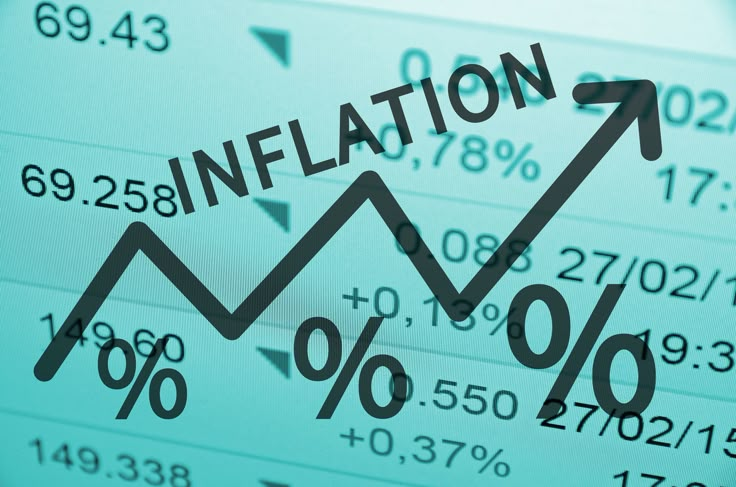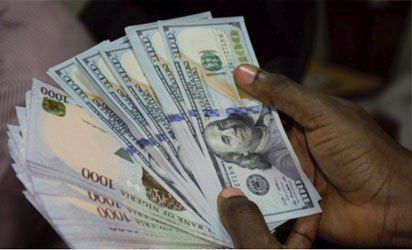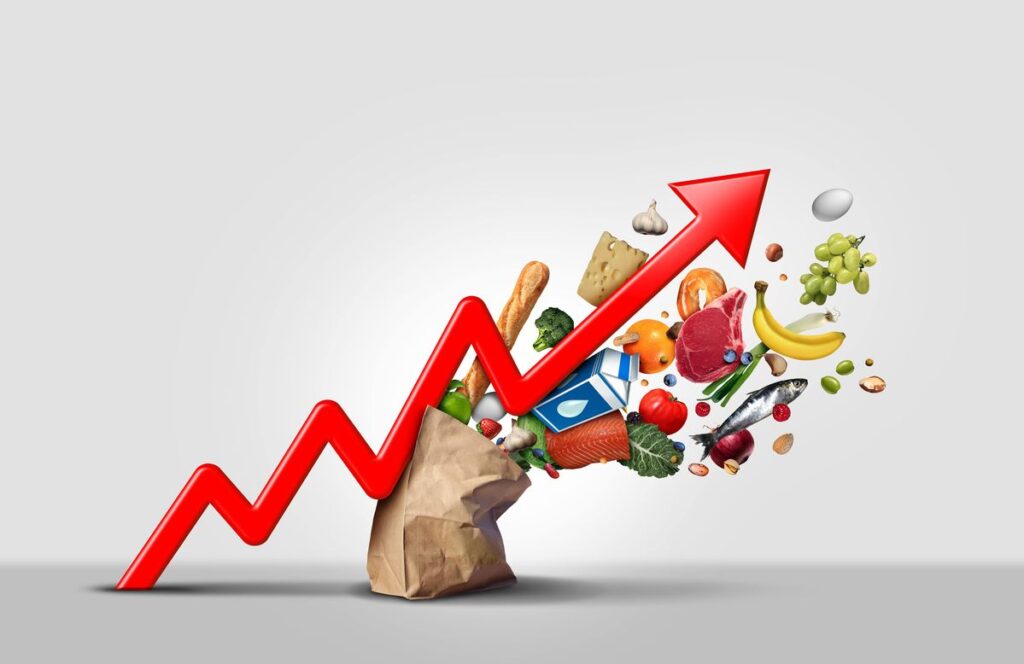This is a statement everyone in Nigeria can relate to: what used to cost ₦1,000 five years ago has more than doubled, or tripled in price. Let’s use eggs, the most common source of protein for the common man, as an example. In 2020, the dreaded COVID year, a crate of eggs cost between ₦1,200 and ₦1,400, depending on your location.
As of 2025, at the time of this writing, the cost ranges from ₦5,400 to ₦6,000, depending on your location. This surge in prices is known as inflation. While inflation is not inherently bad, as it is a necessary component of every growing economy, the inflation rate in Nigeria is higher than usual.
The National Bureau of Statistics reported that in April 2025, Nigeria’s headline inflation surged to a staggering 33.69%. This is one of the highest levels it has gotten to in decades. The figure also explains the astronomically rising cost of living.
In the last few decades, Nigeria has faced double-digit inflation. As a result, savings have become worthless, and people with low incomes have gotten poorer.
Many Nigerians are struggling with the rising prices, as their incomes do not rise as fast or rise at all. But how did a country that is tagged as Africa’s largest economy, built on the wealth of a massive oil boom, find itself in an inflation crisis it can’t seem to escape? How did the Nigerian economy today get so bad, with most citizens unable to afford two meals a day or a balanced diet?
In this article, we’ll examine the root causes of Nigeria’s inflation, including the glory days of the oil boom and agricultural neglect, the politics and policies that affect the economy, and the role of insecurity, inflation’s silent partner, all from a historical perspective. Ultimately, you’ll find that Nigeria’s inflation crisis didn’t begin today; it started decades ago.
But before all that, what does inflation really mean beyond the headlines?
Understanding Inflation in Simple Terms
When you see social media posts or watch the news and hear economists talking about inflation, you might get lost in all the percentages and policy debates. But inflation is not a complicated concept. Simply put, inflation is the speed at which your money loses value.

In other words, it is a general rise in the price of everything, not just one or two items, and the increase happens faster than your income or salary grows. When there is inflation,
- Food: A bag of rice or a carton of noodles costs more this month than it did last month.
- Fuel: The prices of gasoline and diesel increase, affecting transportation costs and the amount businesses and households spend.
- Rent: Landlords will raise rent, further reducing your paycheck, which hasn’t increased from your employer.
- Services: School fees, health care, and even the price of getting a haircut or a weave increase.
As mentioned, a little inflation — around 2-3% yearly — is not bad and is normal for a healthy, growing economy. It encourages people to invest or spend their money, rather than keeping it, which keeps the economy moving. But Nigeria’s inflation is different.
Nigeria’s inflation rate is not a standard one; it is chronic and has been ongoing for years. In the last few decades, Nigeria has faced double-digit inflation. As a result, savings have become worthless, and people with low incomes have gotten poorer. The long period is one reason why Nigeria’s inflation is not just a statistic but a historical one.
Across generations, inflation has shaped Nigerians’ financial habits and sparked concerns about rising prices. Nigerians continue to wonder why the naira’s value keeps falling and when prices will finally drop. While we can’t answer this question, we can illustrate how the inflation crisis in Nigeria originated and the decisions that have sustained it.
The Root of Nigeria’s Inflation Crisis
To fully understand the rise of inflation in Nigeria, we have to go back to the days of the oil boom and agricultural neglect.
The 1970s: Nigeria’s Oil Boom and Agricultural Neglect
Although it might be hard to believe, Nigeria’s inflation story started with the oil boom of the 1970s. Following the 1973 war in the Middle East, global oil prices surged, and Nigeria benefited significantly as “petrodollars” flooded the country. The sudden wealth led to what experts have called a tragic case of “Dutch Disease.”
With the newfound oil wealth, the naira became very strong, and since imported goods, such as cars, became cheaper, Nigeria started importing more, including food. As a result, agricultural exports like groundnuts, cocoa, and palm oil became too expensive for the global market. But the government did not care.
The naira began to weaken, and instead of creating policies that reflected the country’s new reality, the government, through the Central Bank of Nigeria (CBN), tried to “defend” its value.
Agriculture was once the backbone of Nigeria’s economy, but with the shift to oil revenue, the sector suffered, and Nigeria transitioned from being a food exporter to an importer. This failure to diversify the country’s economy was the first significant error Nigeria made, and it laid the groundwork for the current inflation crisis.
The 1980s: The Oil Crash and Failed Interventions
Everything came crashing down in the 1980s when global oil prices crashed. In what seemed like the twinkling of an eye, Nigeria’s primary source of revenue disappeared. However, rather than taking stock, returning to agriculture, and promoting local production and exports, Nigeria continued to import.
But things were just beginning to get bad. The naira started to weaken, and instead of creating policies that reflected the country’s new reality, the government, through the Central Bank of Nigeria (CBN), tried to “defend” its value. To achieve this, they implemented several unsuccessful interventions, including trade controls, strict import licenses, and foreign exchange rationing.
The 1986 “SAP” and Its Legacy
Since the CBN policies were not working, by 1986, Nigeria’s economy was in a free fall, and the government had run out of options. As a result, they turned to the International Monetary Fund (IMF) and adopted its Structural Adjustment Program (SAP). The plan was to use SAP as a shock therapy to fix the Nigerian economy by devaluing the naira.
But beyond the two, Nigeria had nothing to fall back on, having abandoned its agricultural sector and not being an industrial nation.
The government held a currency auction in September 1986, leading to a 66% discount on the naira. The devaluation had a devastating impact on prices, and the cost of imported goods, including food, fuel, and medicine, skyrocketed. This marked a turning point in Nigeria’s inflation history.
An analysis conducted by Michigan State University at the time showed that inflation increased from 5.4% in 1986 to 40.9% in 1989. It was described as a “doomsday scenario.” So, rather than help the economy recover, SAP placed Nigeria’s inflation at double digits, and it has remained that way ever since.
Lessons From the 1970s and 1980s
SAP and the CBN policies left Nigeria worse off than it was when oil prices crashed. But beyond the two, Nigeria had nothing to fall back on, having abandoned its agricultural sector and not being an industrial nation. Additionally, since Nigeria relied heavily on imports, it was vulnerable to fluctuations in the exchange rate.
The unstable exchange rate also affected locally produced goods and services, as the dollar impacted everything in the country — from rent and school fees to the price of diesel and fuel, which most businesses relied on. So anytime the naira depreciates, prices across the entire economy rise, leading to the “cost-push” inflation that still affects the country’s economy.
In the end, although the 1970s oil boom should have served as a buffer against an inflation crisis, Nigeria failed to establish one. Instead, it borrowed more money from the World Bank and the IMF, and when the crisis came, the government devalued the naira.
The Modern Triggers: Policy, Politics, and the Price of the Reform
The story continued this way into the 1990s and the 21st century. In 2016 and 2020, the country’s situation worsened. In 2016, the oil market suffered a significant price crash, which led Nigeria into a recession. The same thing happened in 2020 because of the COVID-19 pandemic.

These two events depleted Nigeria’s foreign reserves and further weakened the naira, causing the economy to falter once again. Additionally, the government continued to spend billions of dollars on fuel subsidies. Since the fuel was imported using the dollar, the naira was on a “managed float,” which created a destabilizing black market.
The Twin Shocks of 2023
So, by 2023, when the new government took power, Nigeria’s economy was on the verge of collapse. To salvage the situation, the newly elected President Bola Ahmed Tinubu made two significant economic reforms. The reforms were intended to stabilize the economy, but they had the opposite effect, worsening inflation.
- Fuel Subsidy Removal: Removing the fuel subsidy was a prudent move for many economists, but it was implemented abruptly. As a result, the cost of fuel rose from about ₦190 to over ₦600 in a single day. The effect was catastrophic, as businesses relied on generators and millions of people used public transportation. The result was a cost-push inflation wave as the cost of moving goods and people skyrocketed.
- Exchange Rate Unification: Following the removal of the subsidy, the Central Bank of Nigeria introduced a new exchange rate policy. The CBN abandoned its complex system of multiple exchange rates and allowed the naira to “float.” This action unified the official and parallel markets, aiming to attract foreign investment.
But the immediate effect was a massive devaluation of the naira. The exchange rate tanked, going from ₦460 to the dollar to over ₦1,500 by 2024. And since Nigeria imports virtually everything, the cost of goods rose.
The Solution of the Dangote Refinery
Amidst the financial crisis, the Dangote Group announced it was about to start refining crude locally. Many economists saw this as a possible solution to the inflation crisis. The logic was simple: if crude is refined locally in Nigeria, the government won’t have to spend dollars importing fuel.
Consequently, it would save the naira and make petrol cheap. However, this was not to be, as refining locally does not automatically solve global-linked costs or the weak naira. Also, the Dangote Refinery was not buying crude in naira but at the global market price set in U.S. dollars.
So, while the dream of saving the naira and making petrol cheaper has not been achieved, the Dangote Refinery has helped reduce the intense pressure on the naira by reducing reliance on imported refined fuel and diesel.
As a result, the dollar still controls the final selling price of fuel and diesel. However, the refinery contributes to the economy in two ways:
- First, Nigeria has energy security as it does not have to rely entirely on imports.
- Second, a local refinery helps the country save foreign exchange as the CBN no longer has to provide billions of dollars to importers.
So, while the dream of saving the naira and making petrol cheaper has not been achieved, the Dangote Refinery has helped reduce the intense pressure on the naira by reducing reliance on imported refined fuel and diesel. Sadly, it cannot instantly help bring down the inflation rate, as the primary cause—the weak naira valuation—remains.
The Role of Insecurity in Nigeria’s Inflation Crisis
Beyond the naira devaluation, another contributor to Nigeria’s inflation crisis is insecurity. While the naira devaluation is a reason for the high cost of imported goods, such as wheat and rice, insecurity is the primary driver of the high price of locally grown food, including yams, tomatoes, and beans.

Nigeria has experienced armed conflict in its food-producing regions, the North-Central and the Middle Belt. There have been several clashes over land, banditry, and kidnapping in states like Zamfara, Katsina, Kaduna, and Niger. As a result, many farmlands were destroyed, farmers were displaced, and harvests were poor.
The insecurity has also affected the transportation of produce from the farms to markets across the country. Essentially, there are fewer farmers planting, less food being harvested and supplied, which has led to prices skyrocketing. All these have led to a vicious cycle that plays out this way:
- Insecurity affects farming, causing supply to drop and food prices to rise;
- High food inflation, together with fuel and rent increases, pushes millions of Nigerians deeper into poverty and desperation, and
- The widespread economic hardship makes it easier for armed groups to recruit those who are jobless by promising them money and power.
More crimes lead to greater insecurity, which in turn drives inflation, and the cycle continues.
The Real Victims of Nigeria’s Inflation Crisis
All these have led to a devastating human cost, as more families cannot afford to feed or have a good quality of life. According to the United Nations World Food Program (WFP), as of 2025, over 33 million Nigerians face acute food insecurity. This had led to a massive hunger crisis in the country.
In 2024, the government raised the minimum wage to ₦70,000, but it did little to help, say, a police constable or a public school teacher live a better life. When you consider that they have to pay rent, transportation, school fees, and other expenses, such as utilities like electricity and gas, where they live, the power of the wage collapses miserably.
Every reform—from the CBN policies of the 1980s to the SAP devaluation plan and the removal of fuel subsidies—only treats the symptoms, not the root cause of inflation.
This shows why so many low-income families have pulled their children from school, and some have fallen into crippling debt. The World Bank described chronic inflation in Nigeria and its impact as “the most significant tax on the poor.” A report by the organization showed that the cost of a basic food basket for the most vulnerable households rose fivefold between 2019 and 2024.
Amidst all these sufferings, the government continues to make promises and introduce reforms. But for Nigerians feeling the brunt of inflation, every reform feels the same, and every promise remains unfulfilled. Every reform—from the CBN policies of the 1980s to the SAP devaluation plan and the removal of fuel subsidies—only treats the symptoms, not the root cause of inflation.
The reforms failed because they did not address the root causes of the inflation, namely:
- Lack of productivity as Nigeria imports more than it produces locally,
- Failures in governance, and
- The impact of corruption on Nigeria’s economy.
According to a 2017 ResearchGate study, corruption and mismanagement were responsible for the failure of about 85% of Nigeria’s economic programs between 1960 and 2000. This suggests that until Nigeria establishes monetary discipline, diversifies its economy beyond oil, strengthens its agricultural and manufacturing sectors, addresses insecurity as a key economic policy, and adopts transparent governance, reforms alone will not resolve the inflation crisis. Instead, it will be a case of applying a new bandage to an old wound.
In Conclusion
From all we’ve discussed, it is evident that Nigeria’s inflation crisis is not an accident — it’s a cycle, built and rebuilt over four decades of short-term reforms and long-term neglect. In each decade, there were new leaders, new promises, and the same result, while Nigerians continue to hope and pray that things will improve.
No policy, whether exchange rate unification or subsidy removal, can solve the problem if the government does not address insecurity and reduce import dependence.
Therefore, the government owes it to Nigerians who can barely feed themselves and business owners who are struggling to stay afloat to take more proactive steps in bringing down inflation. If not, Nigerians will continue to pay more for less, and the inflation crisis will persist.
So, do you think ending the inflation crisis is possible in a country riddled by corruption? Or will Nigerians have to continue enduring chronic inflation? Comment below!
References and Further Reading:
- National Bureau of Statistics (NBS)
- Central Bank of Nigeria (CBN)
- What Is the Dutch Disease? Origin of Term and Examples
- The Structural Adjustment Program: The Journey So Far
- President Babangida’s Structural Adjustment Program and Inflation in Nigeria
- How Conflict and Insecurity are Stifling Nigeria’s Farms
- Positive Economic Momentum in Nigeria, Now is the Time to Bring Home the Gains
- WFP Calls for Urgent Life-Saving Support in Nigeria as 33 Million People Face Food Insecurity in 2025


